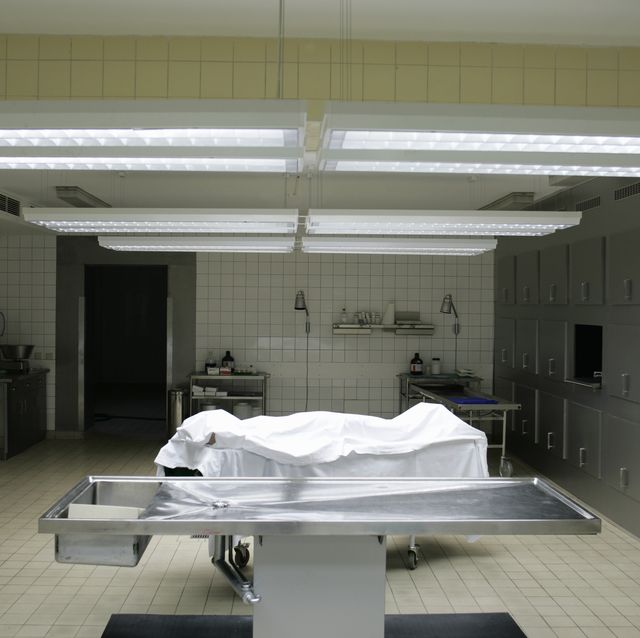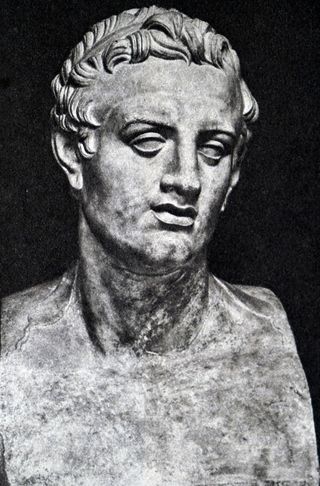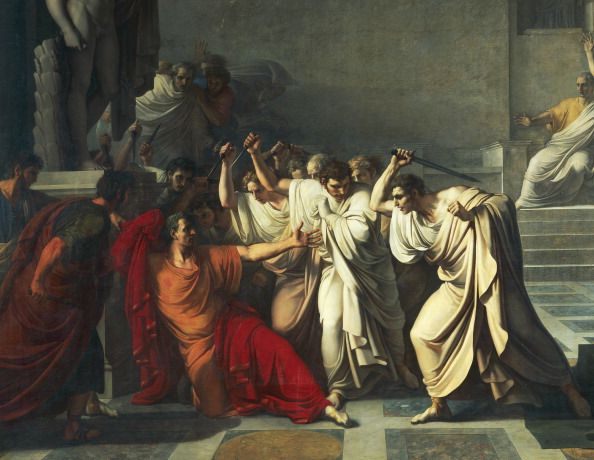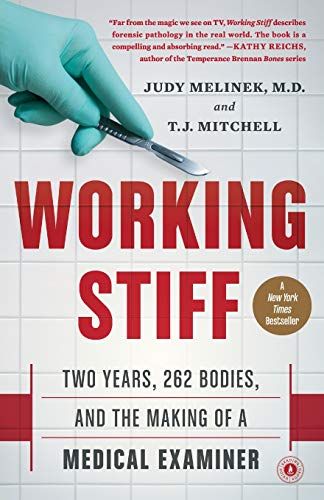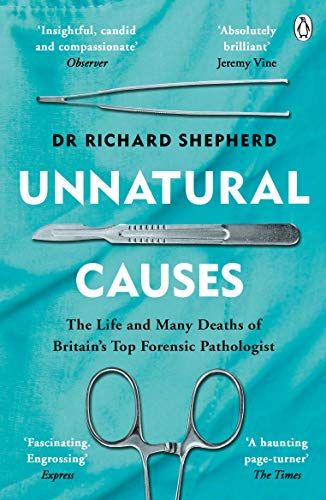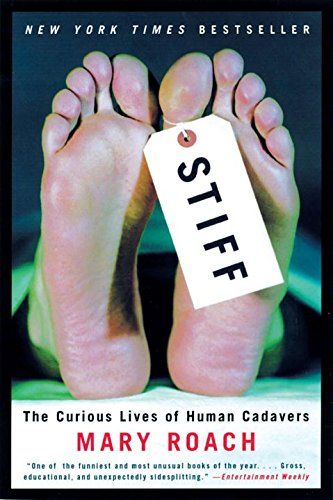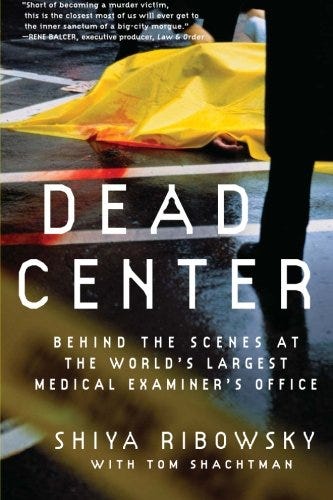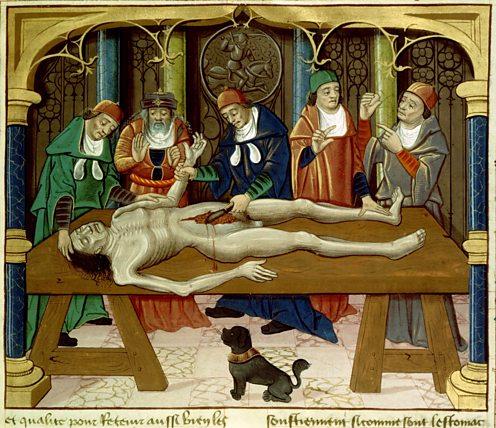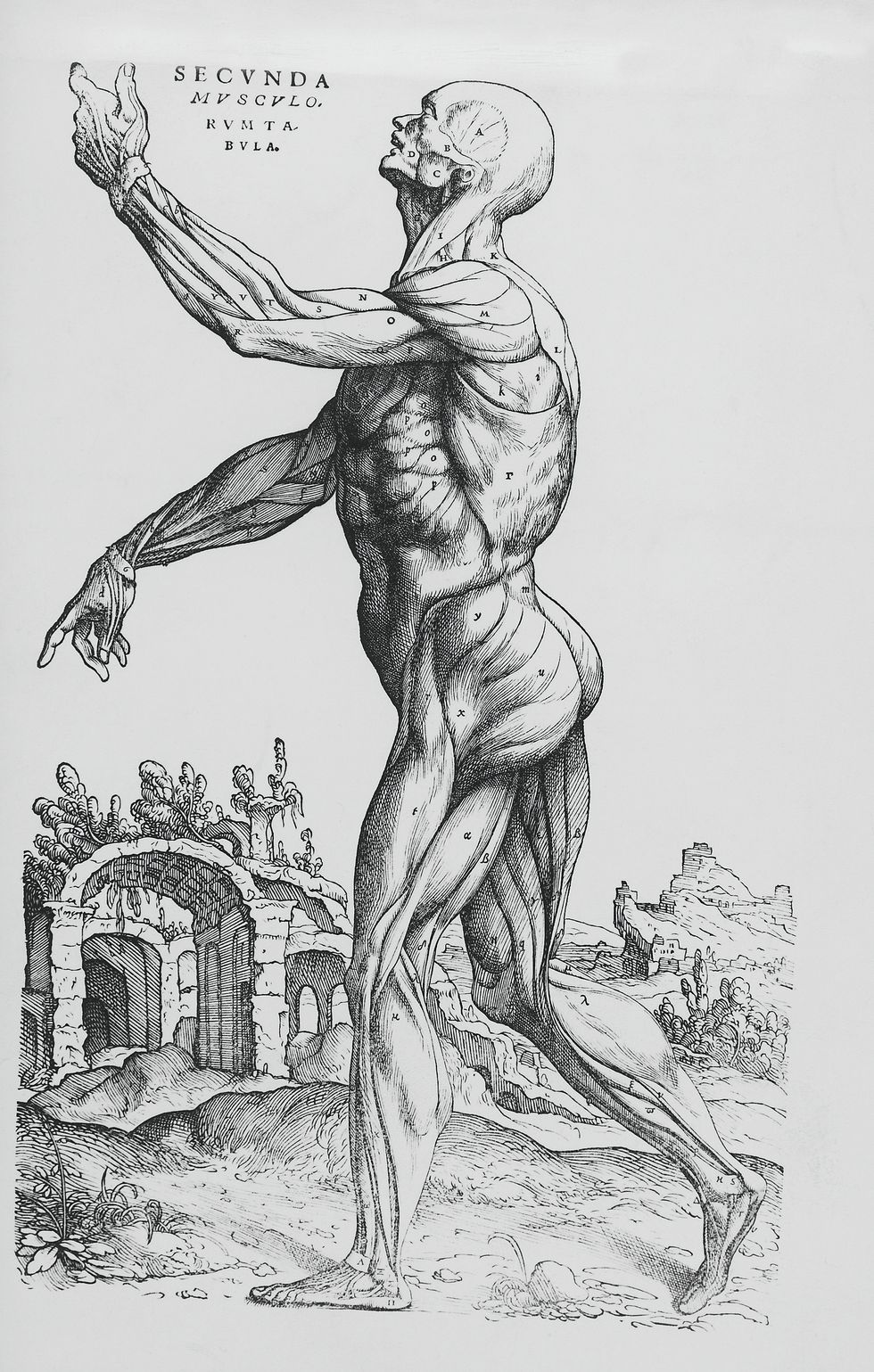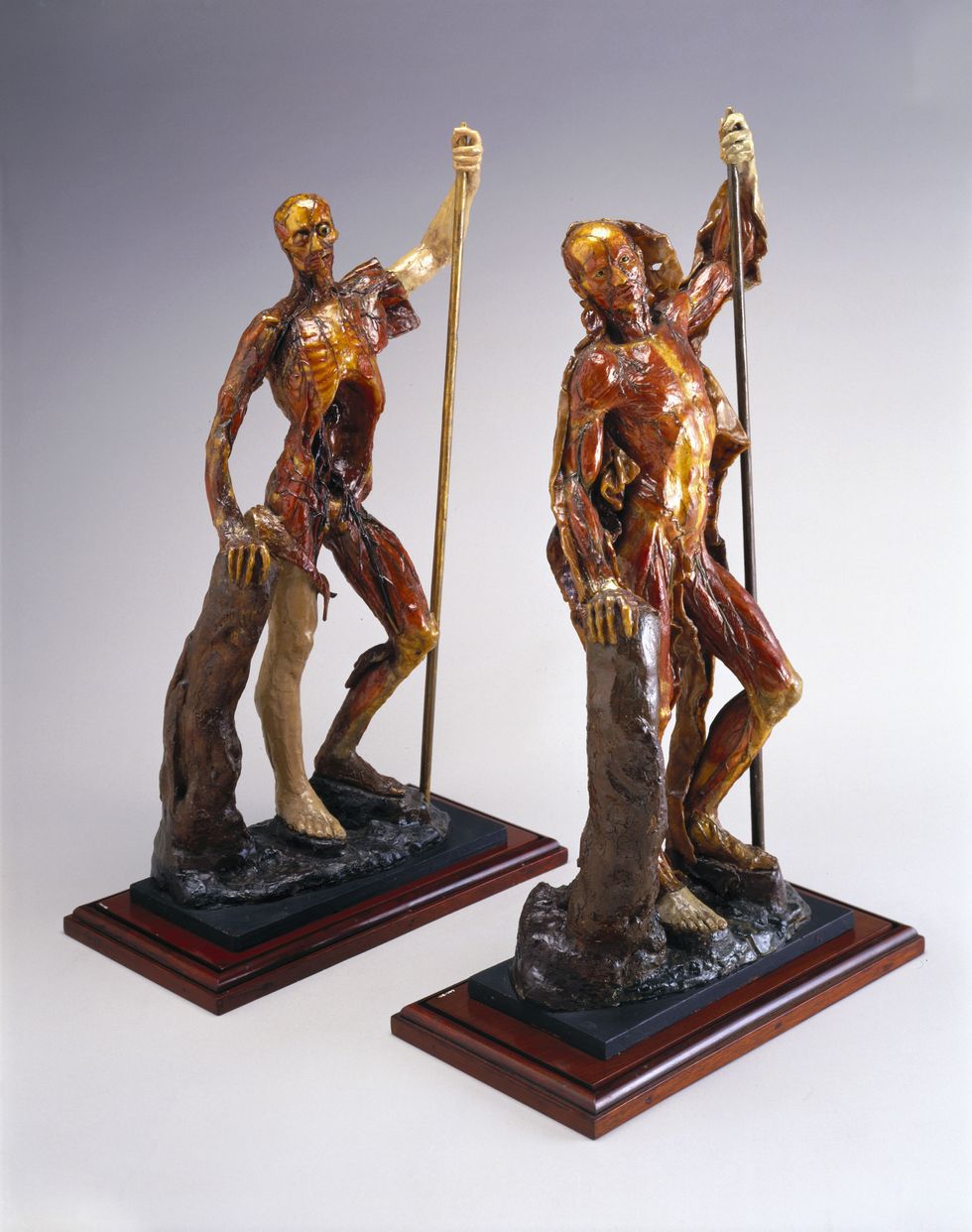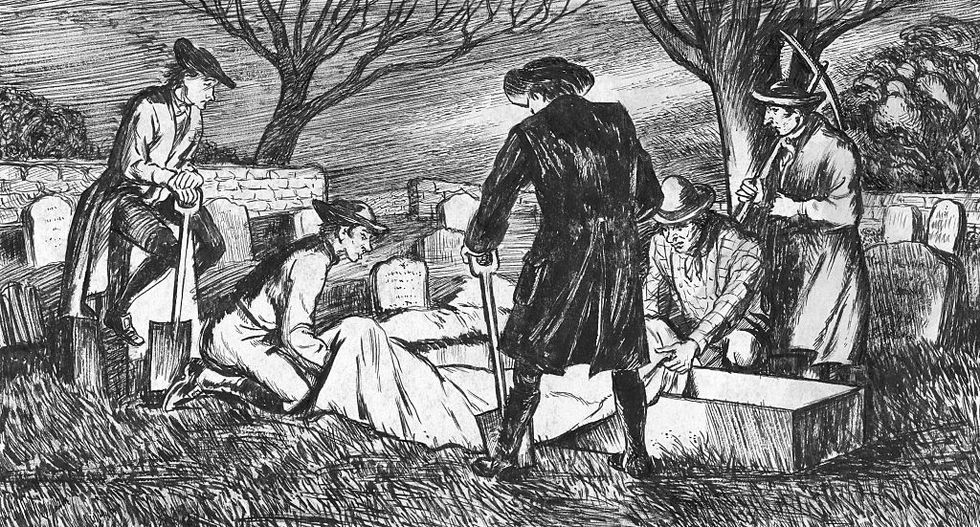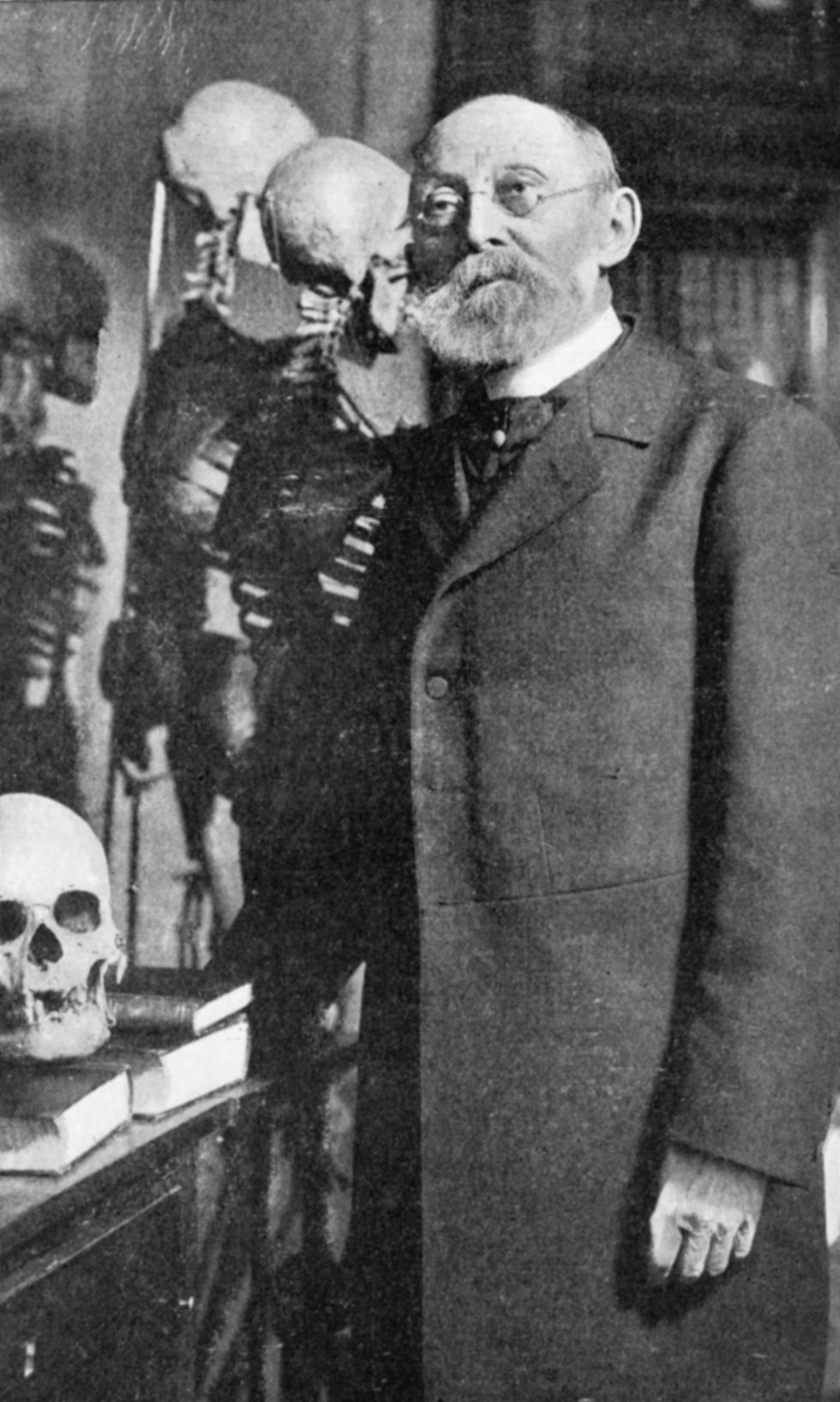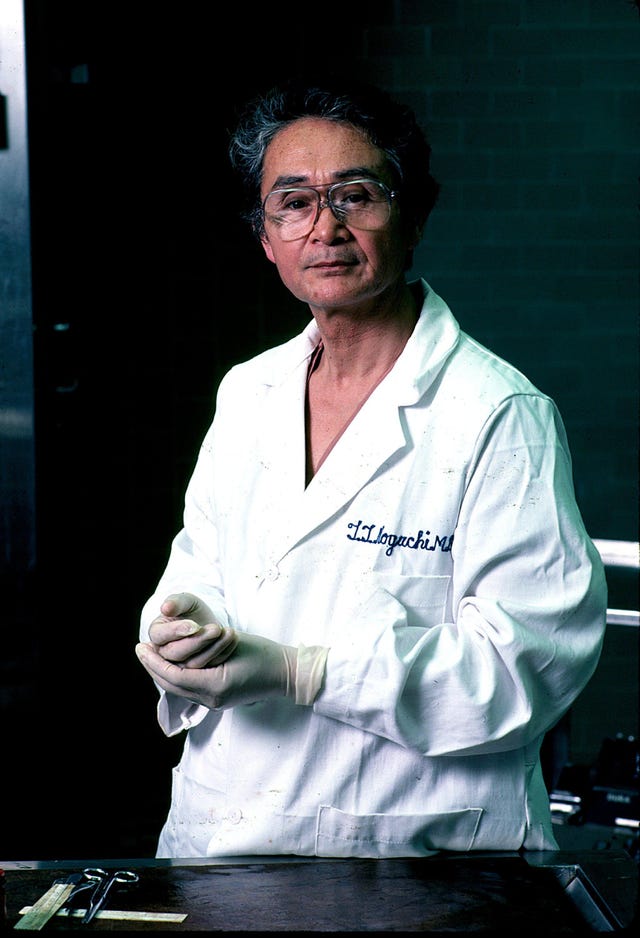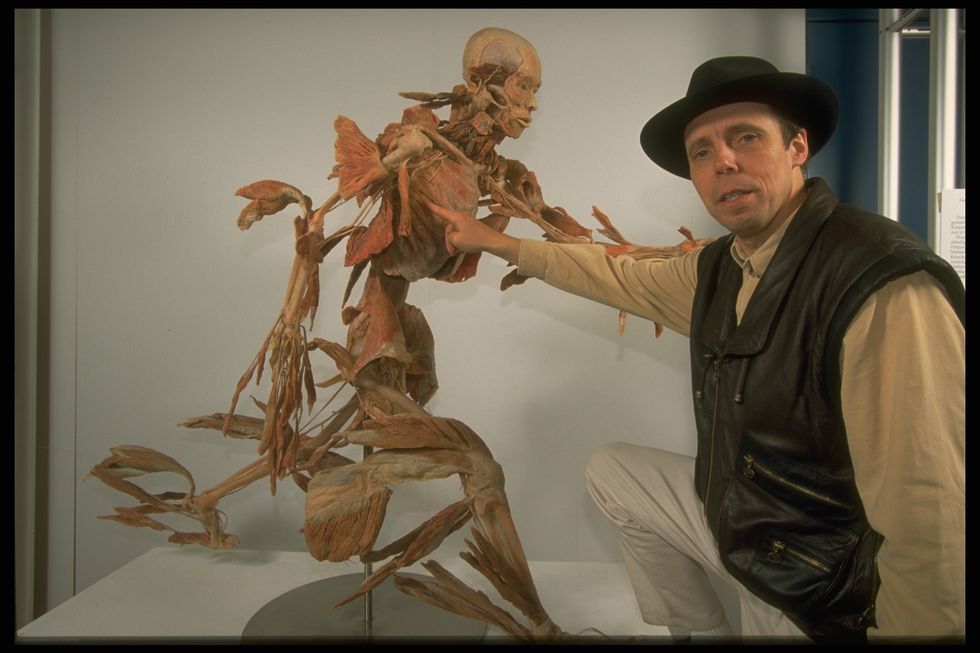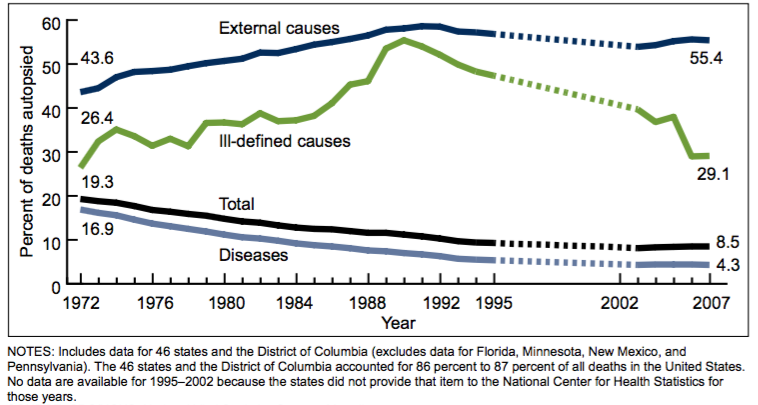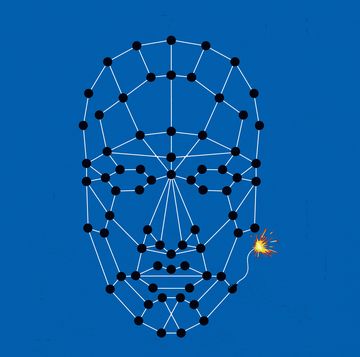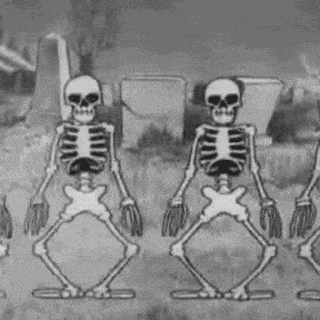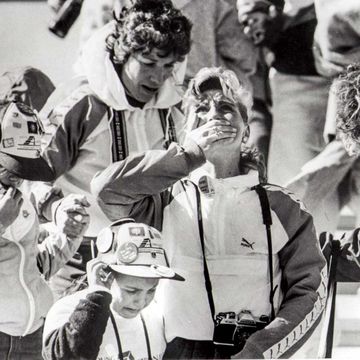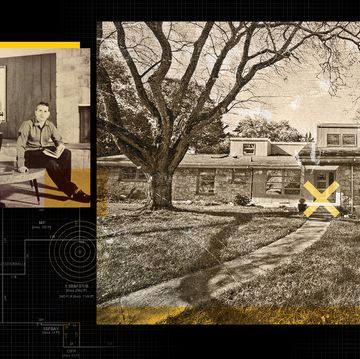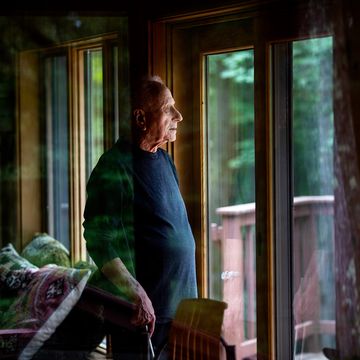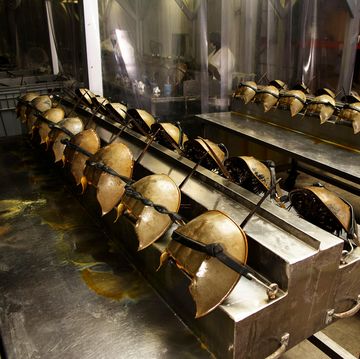Considered the ultimate medical audit, an autopsy can be categorized by five different rulings for manner of death: natural, accident, homicide, suicide, or undetermined. Not everyone receives an autopsy upon death; in a case where suspicious circumstances surround the death, a medical examiner or coroner can order an autopsy without consent from next of kin. If your family has any lingering doubts about what killed you, they can request the procedure, but they'll have to cover the costs—$2,500 to $5,000—themselves.
DIVE DEEPER ➡ Get unlimited access to the weird world of Pop Mech.
Over the last 2,500 years, as medicine moved from mystic art to proper science, so did the field of pathology and the quest to figure out what a person's body can tell us about how they died. Autopsies can provide answers—but even now, sometimes they find nothing but a cloud of uncertainty. Here is their story.
The Beginning
460–370 B.C. No autopsies yet. But during this time, the Greek physician Hippocrates reasoned that diseases had natural rather than supernatural causes. He establishes the humoral theory: Four humors, black bile, yellow bile, phlegm, and blood, make up the human body. All diseases and disabilities, he asserted, were the result of an imbalance in the ratio of the humors to elements within the body.
367–282 B.C. Ptolemy I Soter, king of Egypt, champions pathologic anatomy and establishes the great university and library in Alexandria. He becomes the first ruler to allow medical officials to cut open and examine dead bodies for the purposes of learning. Most of the early dissections were performed on executed criminals. On some occasions, the king even took part in the dissections.
335–280 B.C. Herophilus of Chalcedon, a Greek physician deemed to be the first anatomist, performs autopsies on humans and animals on a regular basis in Alexandria and records a treatise on human anatomy. He introduces many of the scientific terms used to this day to describe anatomical phenomena and was responsible for discovering the anatomical distinction between arteries and veins and the existence of and difference between motor and sensory nerves.
310–250 B.C. Erasistratus denies the prevailing "humor" theory and argues that diseases arise from changes in the organs. Despite the fact that he incorrectly described the circulation of blood, he did accurately note that the heart prevented backflow of the blood and that the epiglottis covered the windpipe during swallowing.
The First Recorded Autopsy
44 B.C. The first recorded autopsy occurs when Antistius examines Julius Caesar’s body after his assassination, determining which of the 23 stab wounds proved fatal. It was one wound to the chest that ruptured Caesar’s aorta.
A.D. 131–201. Galen of Pergamon is the first person to correlate a patient’s symptoms with what was found upon examining the affected area of the deceased. He produces a large amount of written text about the human body—his meticulous masterpiece is titled On the Usefulness of the Parts of the Body—though his writings were based on the inaccurate humoral theory.
1091–1161. Ibn Zuhr, considered the father of experimental surgery, employs testing on animals before operating on humans. In doing so, he invents the surgical procedure of tracheotomy. Zuhr was performing dissections and postmortem autopsies in a time when they were a major taboo. Through his autopsy findings, he concludes that the skin disease scabies is caused by a parasite, contradicting the four humors theory.
☠️ Further Reading
1231. The first law to authorize human dissection is established during the reign of Holy Roman Emperor Frederick II. Frederick decreed that medical schools must receive at least two bodies of executed criminals each year for study and demonstration.
1247. Song Ci wrote Hsi Yüan Lu, or The Washing Away of Wrongs, an instruction manual on how to conduct medico-legal investigations, examine corpses, and determine the time and cause of death. Other forward-thinking forensic issues were illustrated, such as poisoning, decomposition, wounds from various weapons, strangulation, and fake wounds.
1302. Influenced by The Washing Away of Wrongs, Bartolomeo da Varignana conducted the first-known legal autopsy where the death was investigated explicitly to determine if there was fault (what is referred to as a medico-legal autopsy). The investigation was requested by a magistrate in Bologna. Before the advent of the microscope, his observations were limited by the power of the human eye and his tools.
Autopsies During a New Age
Throughout the Renaissance, anatomy teachers and students in medical schools did not perform dissections themselves. They would congregate in an operating theater and watch as a cadaver was opened by a “lay dissector.” Leonardo da Vinci and Michelangelo performed a number of “autopsies,” dissecting corpses and observing the anatomy unseen by the naked eye.
1507. Regarded as one of the founders of pathological anatomy due to his use of anatomic dissection to determine cause of death, Antonio Benivieni published The Hidden Causes of Disease, thus furthering the study of forensic pathology. Some of the protocols he laid out are still used to this day.
1533. The first autopsy in the New World occurs when the Catholic Church ordered an autopsy on the conjoined infant twins Joana and Melchiora, who had died eight days after birth. The goal was to determine if the children shared a soul; the priest baptized them both separately as a matter of precaution as he was not sure whether they represented two bodies and two souls or only one.
1539. A Paduan judge who shared an interest in anatomy professor Andreas Vesalius’s work granted physicians the right to dissect corpses of executed criminals. Vesalius concluded that the assumptions of Galen about the similarities between animal and human anatomy, as well as his errors of observation, were blocking a deeper understanding of the human body.
1543. Vesalius publishes his accurate documentation of human anatomy titled De Humani Corporis Fabrica Libri Septem (The Seven Books on the Structure of the Human Body), disproving the theory of the four humors. Unfortunately the theory still dominated pathological discourse until the 19th century. He broke the paradigm of medicine that separated the intellectual and experiential work. After Fabrica’s release, medical schools began to require that students dissect human cadavers.
1679. Théophile Bonet published Sepulchretum, a complete, organized anthology discussing 3,000 autopsies and classifying the dissections by disease and symptoms. Bonet laid the groundwork for Giovanni Morgagni, who would go on to write arguably the first and most famous pathology textbook. Discussing Bonet’s influence, Morgagni wrote, “by collecting in as great a number as possible, and digesting into order the dissections of bodies, which have been carried off by diseases, he form’d them into one compact body; and thereby caus’d those observations, which, when scatter’d up and down through the writings of almost innumerable authors, were but of little advantage, to become extremely useful, when collected together and methodically dispos’d.”
1690s. Lacking the knowledge of disease transmission mechanisms and proper chemical tests, skilled Italian anatomist Antonio Valsalva sometimes tasted the fluids he encountered in cadavers to try to better characterize them. One observation: “Gangrenous pus does not taste good, leaving the tongue tingling unpleasantly for the better part of a day.”
1724. Hermann Boerhaave documented spontaneous rupture of the esophagus (a condition which became known as Boerhaave syndrome) after performing an autopsy of a Dutch Navy admiral named Baronet Wassenaer. Boerhaave stressed the importance of ascertaining complete medical histories in conjunction with completing autopsies.
New and Individualized Autopsy Methods
1740. Anatomist Anna Morandi married artist and wax sculptor Giovanni Manzolini, and the two led a medical science resurgence in Bologna. Together, they dissected hundreds of cadavers and created hundreds of anatomical wax sculptures. The two pioneered a novel method for the time: Instead of approaching the whole body for dissection and study, they extracted organ systems for further bisection and separate study, which allowed them to create intricate wax models of individual organ systems for teaching purposes.
1751. British Parliament enacted the Murder Act, including the provision “for better preventing the horrid crime of murder” that some “further terror and peculiar mark of infamy be added to the punishment.” The Act mandated either public dissection or the hanging in chains of the cadaver.
1761. Giovanni Morgagni described what could be seen with the naked eye in his voluminous work entitled De Sedibus et Causis per Anatomen Indagatis (On the Seats and Causes of Diseases Investigated by Anatomy). He compared the symptoms and observations in some 700 patients with his anatomical findings upon examining their dead bodies, further expanding the understanding of pathology. He organized his cases by organ system and documented patients’ clinical histories, correlating these histories with his autopsy findings. Many consider De Sedibus to be the first pathology textbook and Morgagni to be the father of pathologic anatomy.
1775. After his friend Dr. Joseph Warren was shot and killed in the Battle of Bunker Hill, Paul Revere made the first forensic dental identification of his friend’s remains, as he was responsible for fashioning the ivory teeth found on the body.
1800. French physician Xavier Bichat, considered the father of histology and tissue pathology, was the first person to look deeper than the organs, dissecting the organs and analyzing the tissues that comprised them. He resolved that the human body could be broken down into 21 different kinds of tissues, the vital functional and structural elements making up organs.
1800s. Karl Rokitansky performed over 30,000 autopsies (including that of Ludwig van Beethoven) and supervised 70,000 over his 45-year career. Through his thorough procedures, in which he examined every part of the body, he was able to catalogue pathological findings in more detail than ever before.
1821. Napoléon Bonaparte reportedly requested an autopsy as his dying wish: “After my death I wish you to do an autopsy … make a detailed report to my son. Indicate to him what remedies or mode of life he can pursue which will prevent his suffering … This is very important, for my father died … with symptoms very much like mine.” His personal physician, Francesco Antommarchi, performed the autopsy, which revealed unmistakable signs of stomach cancer.
1827–28. Eager to cash in on the prosperous body-snatching trend of the time, Irish immigrants William Burke and William Hare teamed up to murder 16 people in Scotland, providing the cadavers to a Dr. Robert Knox. No honor among thieves: Hare testified against Burke, who was hanged in front of a large crowd on January 28, 1829. Hare was released and Burke’s corpse was publicly dissected. Simon Pegg and Andy Serkis brought the two to the big screen in the 2010 film Burke & Hare.
1832. British Parliament passed the Anatomy Act, giving freer license to doctors, teachers of anatomy, and medical students to dissect donated bodies. It was enacted in response to the rampant revulsion to the illegal trade of corpses.
1839. The first physician-in-chief of Johns Hopkins Hospital, Dr. William Osler, helped create the Johns Hopkins School of Medicine. Often referred to as the father of modern medicine, Osler insisted that students learn from seeing and talking to patients rather than being confined to lecture halls. He’s credited for establishing the first residency program for the specialty training of physicians. Much of his knowledge of diseases stemmed from the 1,000 autopsies he conducted. Today, Johns Hopkins is the premier institution where autopsies are conducted.
1853. With autopsies now a mainstay in criminal investigations, Dr. J.O. Sharber performed one on a young slave in Tennessee who was suspected of being pregnant and having been poisoned. He was able to determine that she suffered from long-standing uterine cancer, which had led her to bleed to death. Her plantation owner ordered the autopsy to prove his innocence and he was eventually exonerated.
Historical Autopsies: A President, a Writer, a Starlet, and the King
1865. An autopsy of assassinated United States president Abraham Lincoln was performed at the White House by army surgeons. Lincoln's wife, Mary Todd, sent a messenger to request a lock of hair, and a tuft was clipped from the head for her.
1870s. The father of modern pathology, Rudolf Virchow realized the importance of the microscope when conducting pathological research to uncover minute details. Through his examinations, he characterized a case of leukemia, and his resulting report is one of the earliest formal reports on this cancer.
1892. American poet Walt Whitman died on March 26, and his autopsy reveals that “his brain was found to be abnormally large.”
1902. While working at the Johns Hopkins laboratories, Dr. Dorothy Reed Mendenhall, in part through analyzing autopsies, proved that Hodgkin’s disease was not a form of tuberculosis and discovered the blood cell disorder characteristic of the disease (known as the Reed cell). She was only 28 years old at the time.
1912. Oops. Richard Cabot studied 3,000 autopsy reports and reported that more than 50 percent of diagnoses were incorrect.
1915. In the first high-profile murder case involving a forensic pathologist, Bernard Spilsbury linked George Smith to murdering his three wives, each in the bathtub.
1936. Canadian physician Dr. Maude Abbott worked in the pathology department at McGill University. Her research focused on congenital heart disease, and her publication Atlas of Congenital Heart Disease outlined a new classification system for heart disease, significantly improved the understanding of the heart’s anatomy, and laid the foundation for modern heart surgery.
1946. The forensic pathologist Arthur Keith Mant headed the medical section of the British Army’s wartime group. Gaining evidence from exhumed corpses led to the execution of prominent Nazi doctors.
1951. The Joint Commission on Hospital Accreditation was founded and set a minimum hospital autopsy rate of 20 percent as a way to ensure and improve quality of hospital care and render mortality statistics more accurate.
1952. The Committee on Forensic Pathology was created by the College of American Pathologists to increase forensic training for pathologists.
1953. Dr. Edith Potter published her magnum opus Pathology of the Fetus and Newborn, paving the way for perinatal pathology. Over 33 years at the University of Chicago, Potter performed 10,000 autopsies on infants, and published 140 scientific papers and six books. In the 1930s, she determined that the leading causes of death among infants were intracranial hemorrhage and hypoxia, which were associated with long, traumatic labors. In the 1940s, she linked common abnormal facial characteristics in infants (a condition that became known as Potter’s facies) to the absence of fetal kidneys.
1962. On August 5, the day of her death, Marilyn Monroe showed signs of advanced rigor mortis, leading coroners to believe she died between 8:30 p.m. and 10:30 p.m. on August 4. The toxicological analysis determined the cause of death: acute barbiturate poisoning.
1968. U.S. Attorney General Ramsey Clark requested four physicians to examine photographs, X-rays, and other evidence and to evaluate their significance relating to the medical conclusions in the autopsy report pertaining to President John F. Kennedy’s assassination. They concluded that Kennedy was struck by two bullets fired from above and behind him, one of which traversed the base of his neck on the right side, without striking bone, and the other entered the skull from behind and exploded its right side.
1971. The Joint Commission for Accreditation of Hospitals (JCAH) abolished its requirement for a minimum autopsy rate for hospital accreditation, which led to the further decline of autopsies.
1977. Elvis Presley dies suddenly and unexpectedly, the cause of death originally listed as a heart attack. Later toxicology reports identified levels of several pharmaceutical drugs, with codeine ten times the therapeutic level in his system.
1981. On November 28, actress Natalie Wood is found facedown in the water one mile away from her yacht, Splendour. Only two other men were on board the boat aside from her husband Robert Wagner: actor Christopher Walken and the boat’s captain, Dennis Davern. Notoriously afraid of water, the autopsy report revealed that she had bruises on her body and arms, as well as an abrasion on her left cheek. In the 21st century, the podcast Fatal Voyage digs into Wood's mysterious demise.
1987. Pathologist Dr. Lee Lehman discovered cyanide in the corpse of John Powell while conducting an autopsy at Drake Memorial Hospital. A nurse’s aid, Donald Harvey, was linked to the murder after police searched his house with a warrant and uncovered cyanide and arsenic. Harvey subsequently confessed. He had been poisoning patients for years. He was tried and convicted of 24 counts of murder. Over 17 years working at hospitals, Harvey estimated he had killed 87 people, though some people say 130.
Early 1990s. As forensic photogrammetry developed, the idea for conducting noninvasive documentation of body surfaces using CT scans, MRIs and 3D surface scanning took root. Swiss Professor Richard Dirhofer coined the term ‘Virtopsy’—a portmanteau of ‘virtual’ and ‘autopsy’.
1995. After serial killer Jeffrey Dahmer was bludgeoned to death in prison, his body was left partially shackled until a doctor began the autopsy. His brain was removed and preserved for possible study.
New Discoveries: Autopsies and Sports
2002. The first hard evidence that playing football could cause permanent brain damage was discovered when Steelers center Mike Webster died at the age of 50. Dr. Bennet Omalu, who performed Webster’s autopsy, said, “I saw changes that shouldn’t be in a 50-year-old man’s brains, and also changes that shouldn’t be in a brain that looked normal.”
The condition Webster had was chronic traumatic encephalopathy (CTE).
2002. Gunter von Hagens, the creator of the Body Worlds exhibition, performed the first public autopsy in Britain in nearly 200 years. On the evening of November 20, he conducted the procedure in front of a randomly picked, paying audience, which was then broadcast in an edited, documentary-style version. The event took place in secret because its legality was ambiguous; it was uncertain whether von Hagens had a U.K. license to perform the autopsy.
2003. Virtopsy is performed on a 3,000-year-old mummy provided by the British Museum. The mummy, named Nesperennub, was virtually unwrapped using cutting-edge CT scanning technology and visualization techniques.
2007. When Anna Nicole Smith was found unresponsive on February 8, no one could hazard a guess as to the cause. Through her autopsy, it was revealed that she died of an accidental overdose of a sleeping medication and at least eight other prescription drugs.
2007. According to the CDC, the percentage of deaths for which an autopsy was performed declined by more than half from 1972 through 2007, from 19.3 percent to 8.5 percent. In 1972, 79 percent of autopsies were performed for deaths due to disease conditions and 19 percent for deaths due to external causes. By 2007, the respective percentages were 46 percent and 50 percent.
2009. An autopsy of pop icon Michael Jackson reveals that he died of a propofol overdose—consistent with major surgery anesthesia—but several sedatives that Dr. Conrad Murray gave him on the morning of his death contributed. A cardiologist, Dr. Murray served as Jackson’s tour doctor and is now serving a sentence for involuntary manslaughter for his role in the singer’s death.
2018. On January 16, 21-year-old Washington State quarterback Tyler Hilinski took his own life after experiencing early symptoms of CTE. With the brain of a 65-year-old, his death serves as a tragic reminder that CTE is not limited to athletes who have played out their careers. According to Chris Nowinski, the cofounder and CEO of the Concussion Legacy Foundation, “Scientists hope to have a preliminary diagnostic criteria for diagnosing CTE during life within five years.”
Maude is a Michigander living on the Upper East Side. She writes and copyedits for anything and everything Popular Mechanics.

Henry is a researcher/copy editor/writer, guitarist, cat daddy, and nature enthusiast. Recently, he moved from Brooklyn to Utah, where he’s traversing mountains and hanging with the buffalo.
